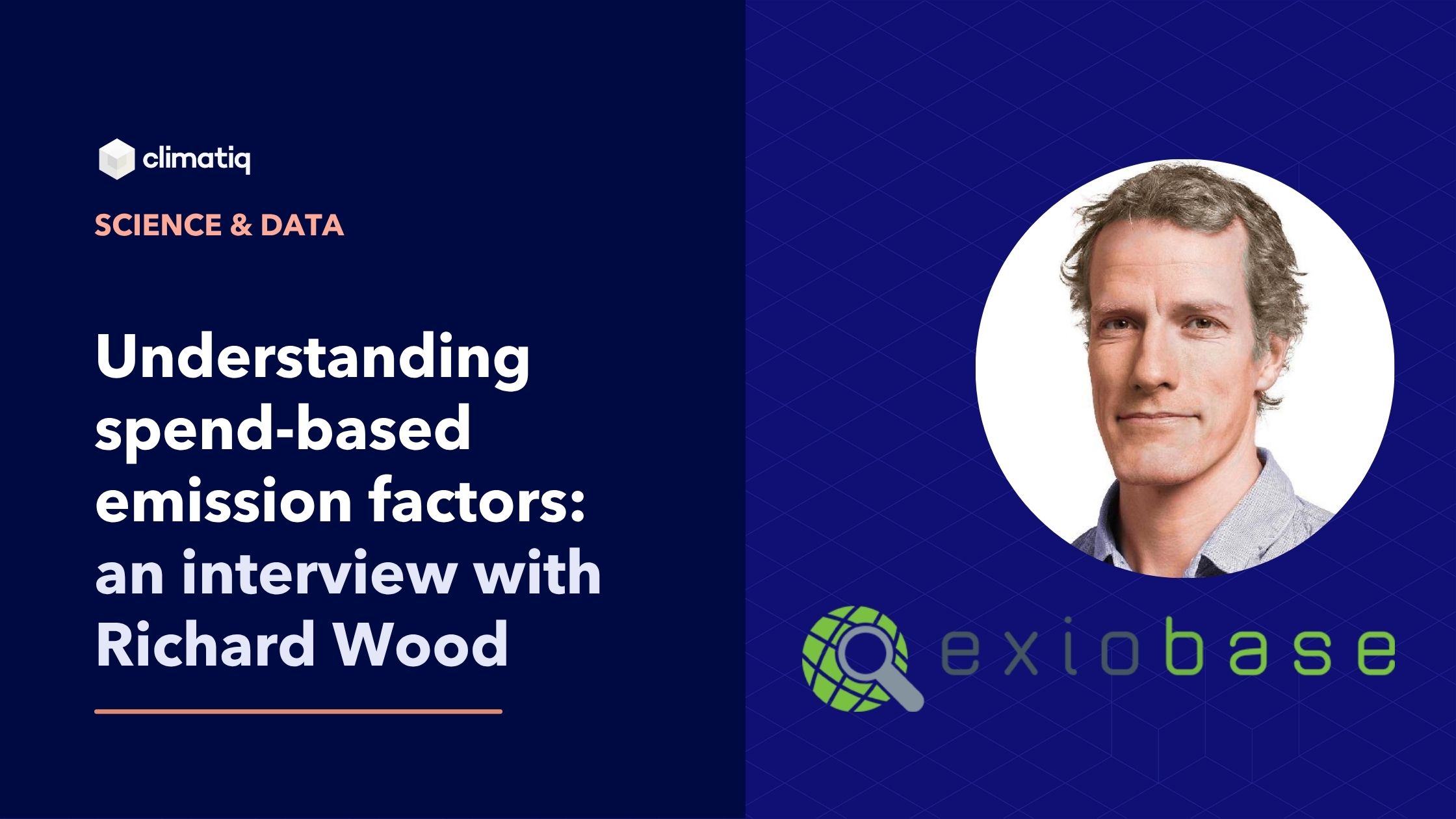


If you've ever come into contact with carbon accounting, you're probably familiar with the spend-based approach. It's a widely used method—especially for calculating emissions under scope 3.1 of the GHG Protocol (purchased goods and services) because it relies on something nearly every company already has: expenditure data.
To power this approach, researchers use large-scale economic models based on input-output tables (IOTs), which map the flow of money between sectors. EXIOBASE is an IOT that goes a step further. It’s what’s known as an environmentally extended multi-regional input-output table, meaning it not only captures economic relationships across countries, but also links them to environmental impacts like greenhouse gas emissions. Among IOTs, EXIOBASE is the most widely known and used, with coverage across 44 countries and representing 95% of global GDP.
To explore the story behind EXIOBASE, we spoke with one of its lead codevelopers, Professor Richard Wood. A global leader in the field and member of our Scientific Advisory Board, Richard shared insights into EXIOBASE’s latest update, how to make the most of the data, and what the future holds for spend-based emissions accounting.
Climatiq: What has changed in the latest version of EXIOBASE (3.9/3.10)?
Richard: In a nutshell, the latest data is much more up to date, and the focus has shifted to more robust and regular updates for applied users. With the transition to v3.9 and v3.10, two major methodological updates have been introduced. Firstly, we now incorporate updated official SUT (supply and use table) data up to 2022. Secondly, a new method for constructing energy accounts and associated air emission estimates has been implemented.
On the licensing side, starting with v3.9, EXIOBASE is made available under a customized version of the CC BY-SA-NC license for non-commercial uses, with distinct commercial licenses being developed for industry applications. This change aims to provide clearer usage conditions for both research and commercial users and allows us to fund the annual update of the data.
Climatiq: How would you describe the ideal user of spend-based emission factors?
Richard: Spend-based emission factors are valuable for those looking to do “big-picture” carbon accounting to help pinpoint hot-spots. But this is not to say that it is the only use or the typical user.
Spend-based factors are based on consistent international classification schemes that can be linked into many systems—from procurement to national accounting to household expenditure. Whilst the underlying databases are huge, the actual emission factors are simple, and readily available.
EXIOBASE is suited for users who require a consistent, science-based approach to carbon accounting, including meeting compliance requirements from the GHG Protocol and PCAF. If you want a database that is accessible and backed by the best science, I think that makes you the perfect user for EXIOBASE.
Climatiq: Can you share insights into the roadmap for EXIOBASE? What’s next?
Richard: There are a lot of advancements we have in the pipeline, from fairly mundane aspects, such as purchaser-price adjustments and inflation corrections, to more “exciting” changes that radically increase usability.
We are increasing the robustness and detail underlying all data, increasing spatial coverage, and coverage of environmental pressures, and linking into models that better capture ecosystem impacts. We’re producing forward-looking estimates that follow best available scenarios on social development (and climate policy), and better incorporating modelling of downstream impacts.
Climatiq: More broadly, what’s your perspective on the future of spend-based carbon footprint calculations?
Richard: Spend-based calculations sometimes come under fire for being difficult to “action” reductions. They’re never likely to be able to be as precise in linking physical energy use with associated emissions as activity-based assessments, but I believe they provide better insights into the overall nature of the issue, including how humans often make decisions (based on cost).
Spend-based approaches are also generally more comprehensive, and easier to implement into existing accounting frameworks. This provides guidance into the big picture—where the problems really occur in your supply chain.
Proactive companies are already addressing their scope 3 emissions, and I believe that there will be further standardization of reporting to keep it simple but available in the future. I’m not saying that spend-based accounting should be used in preference to activity-based, but they are good complements for each other.
Standard financial accounting is a cost of doing business. We should be aiming for emissions reporting to be a minimal additional cost to this.
To find out more about the science behind spend-based emission factors, check out our blog.